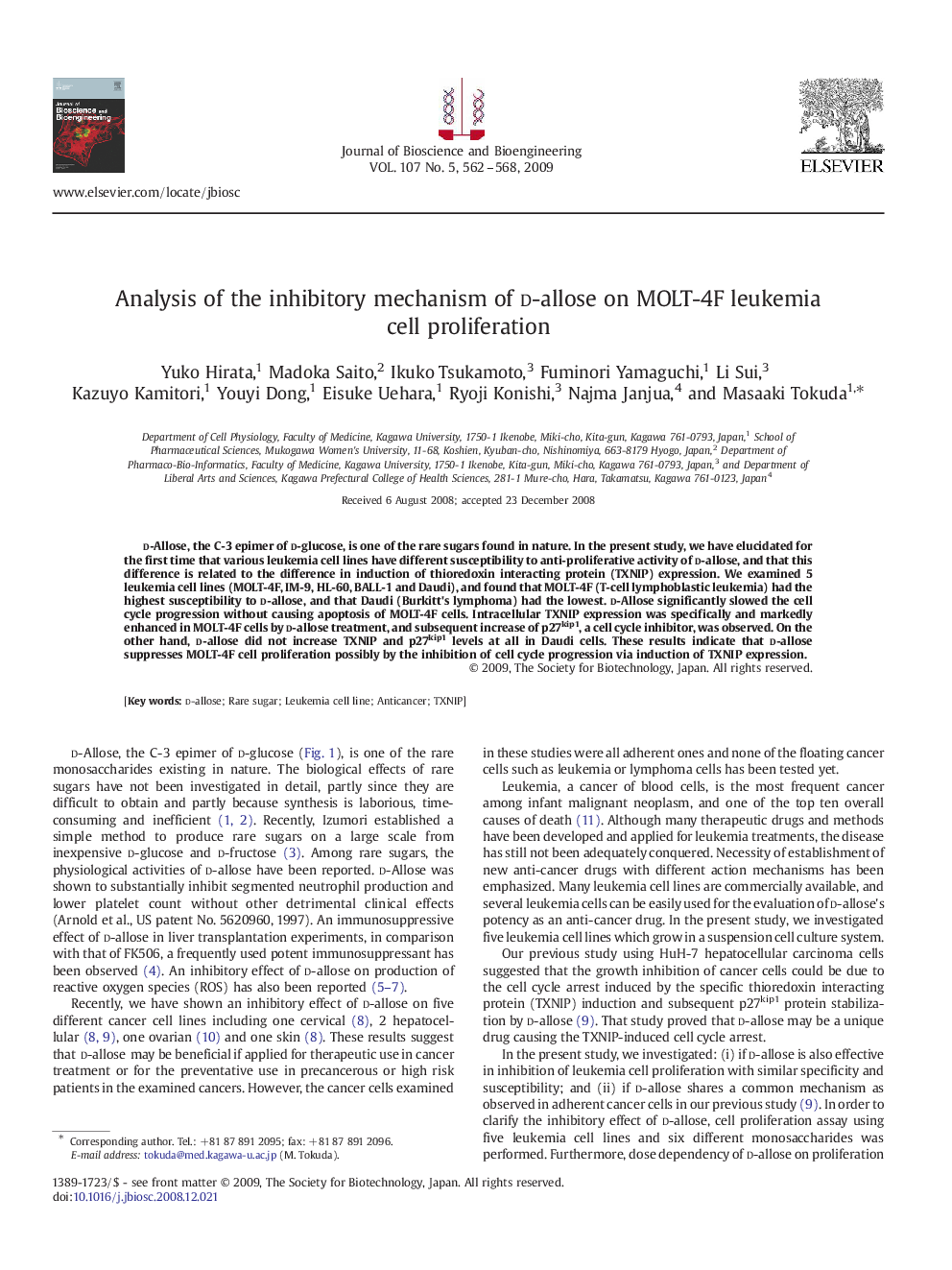| Article ID | Journal | Published Year | Pages | File Type |
|---|---|---|---|---|
| 22189 | Journal of Bioscience and Bioengineering | 2009 | 7 Pages |
d-Allose, the C-3 epimer of d-glucose, is one of the rare sugars found in nature. In the present study, we have elucidated for the first time that various leukemia cell lines have different susceptibility to anti-proliferative activity of d-allose, and that this difference is related to the difference in induction of thioredoxin interacting protein (TXNIP) expression. We examined 5 leukemia cell lines (MOLT-4F, IM-9, HL-60, BALL-1 and Daudi), and found that MOLT-4F (T-cell lymphoblastic leukemia) had the highest susceptibility to d-allose, and that Daudi (Burkitt's lymphoma) had the lowest. d-Allose significantly slowed the cell cycle progression without causing apoptosis of MOLT-4F cells. Intracellular TXNIP expression was specifically and markedly enhanced in MOLT-4F cells by d-allose treatment, and subsequent increase of p27kip1, a cell cycle inhibitor, was observed. On the other hand, d-allose did not increase TXNIP and p27kip1 levels at all in Daudi cells. These results indicate that d-allose suppresses MOLT-4F cell proliferation possibly by the inhibition of cell cycle progression via induction of TXNIP expression.
